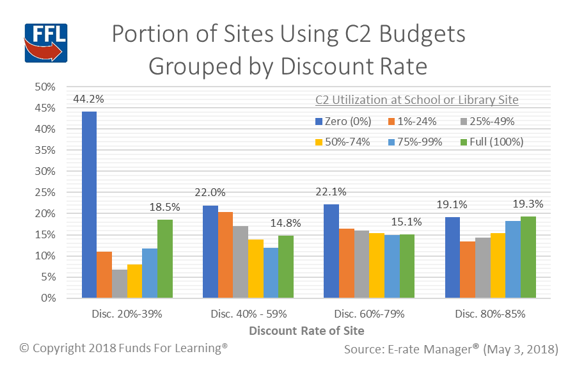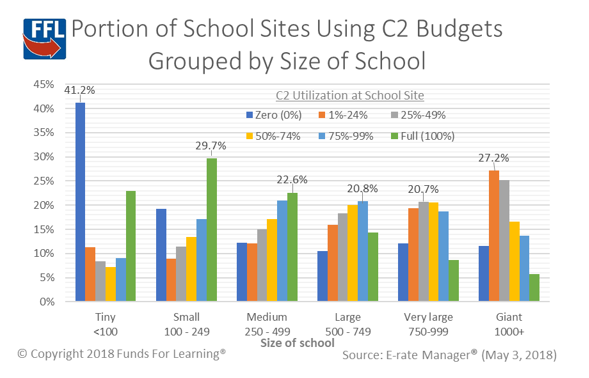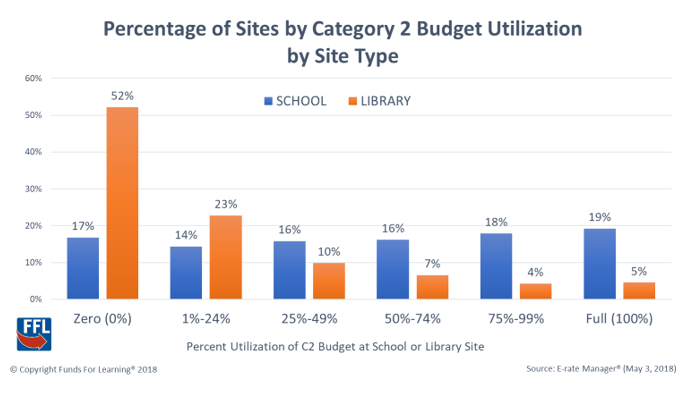Continuing last week’s review of C2 budget utilization, this week we will take a deeper look into the C2 site utilization data. What drives the usage (or lack thereof) of Category 2 E-rate discounts? Share your thoughts about the C2 budget system via this annual survey here. The results will be submitted to the FCC.
***
Slicing and dicing through the data, it quickly becomes apparent that there is no easy answer to the question of C2 budget utilization. There is no single factor that tells the story. Indeed, that fact may be the biggest story, and the greatest reminder to us all, that each school and library building has a unique story. One-size-fits-all solutions are hard to come by, and, frankly, probably do not exist in the E-rate world. The structure of the program, and the way it is administered, should always account for the tremendous variations in the needs and circumstances of various schools and libraries.
With that said, there are a few factors that can help predict whether a site is using its C2 budget. What are they?
- Location? No, urban and rural sites have very similar utilization.
- Discount rate? Yes, but not in the way you might expect. Low discount rate sites (20%-39%) have double the rate of zero utilization sites; however, above that, whether a site has a 40%, 60% or 80% discount rate does not have a huge impact on utilization.
- School or library? Yes, this is the hands down biggest factor. 52% of library sites have not applied for C2.
- School size? Yes, the size of a school site appears to have a significant impact on utilization. Interestingly, though, the smallest schools, those with fewer than 100 students, or those with 100 to 249 students, have the highest “zero utilization” rate and the highest “full utilization” rate. In general, smaller schools either apply, and max out their C2 budget, or they do not apply at all.
Understanding the impact of the C2 budget system, and carefully analyzing the factors that encourage or discourage its success, is a unique challenge. Because there is no “one factor”, a system that maximizes flexibility, minimizes administrative burden and promotes local decision-making is the one most likely to succeed.



